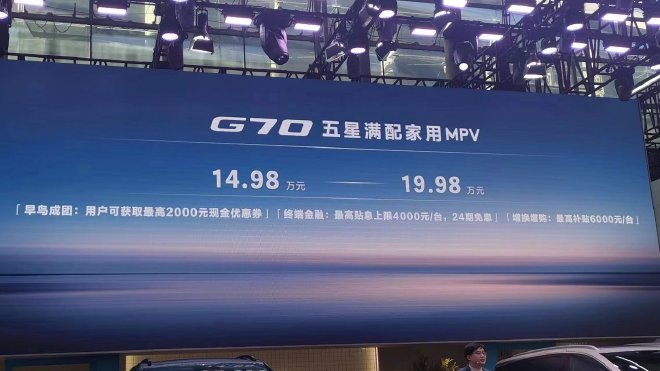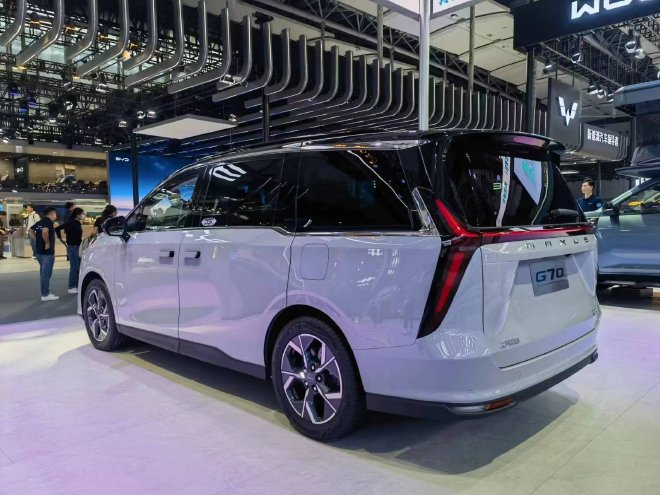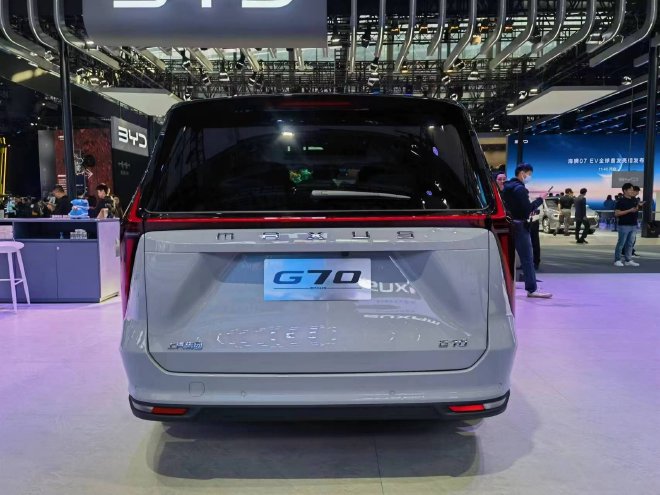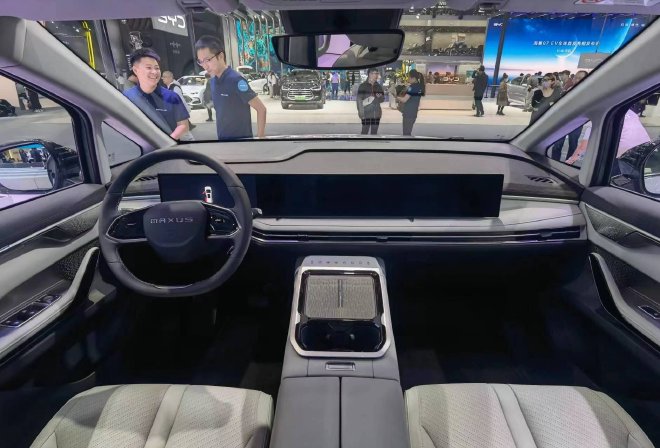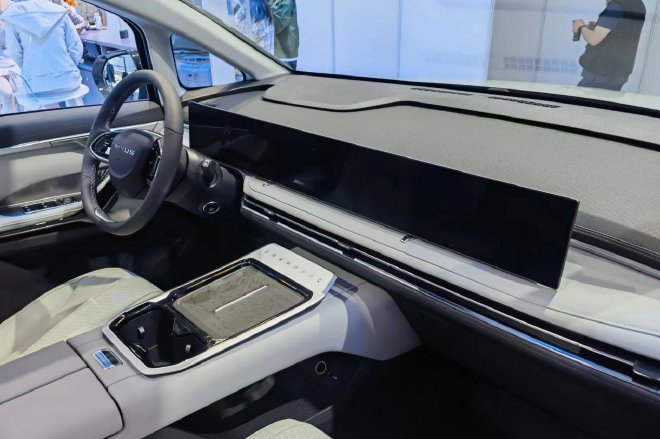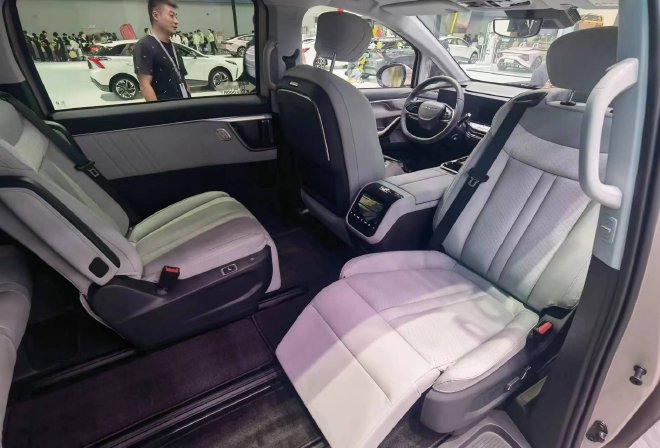On November 18, 2023, at the ongoing 2023 Guangzhou Auto Show, SAIC Maxus officially launched the G70. The new car is positioned as a large MPV, featuring a brand-new design language and equipped with a Qualcomm Snapdragon 8155 chip for the car’s entertainment system. It is available in 6-seat and 7-seat models and supports multiple usage scenarios. It is powered by a 2.0T engine paired with a 9-speed automatic transmission. The new car adopts a customized sales model, with prices ranging from 149,800 to 199,800 yuan (27960$). The official launch also includes purchasing rights, as shown in the image below.
In terms of appearance, the SAIC MAXUS G70 adopts the latest family-style design, which is different from any current SAIC model. The front of the car has a long engine hood, a large trapezoidal grille with dense diamond-shaped hollow design, and huge side air intake decorations on the bumper, giving it a very bold and assertive style.
The front grille of the new car is designed with a through-type daytime running light, which almost surrounds the entire hood. The ends of the light group are raised to show a sporty atmosphere, and the lower part is equipped with lens LED headlights, which are integrated with the intake decoration on both sides. In TSN style: The new car features a front grille with a continuous daytime running light that almost wraps around the entire hood. The ends of the light group are raised to exude a sporty vibe, and the lower part is equipped with integrated lens LED headlights that blend seamlessly with the intake decoration on both sides.
The side of the body has the usual design beauty of a mid-sized MPV, with neat lines and black high-gloss decorative panels on the B/C/D pillars, achieving the visual effect of a floating roof. In terms of details, the new car has hidden door handles, double-layer soundproof glass as standard, and electric sliding doors with hidden tracks. In terms of body size, the length, width, and height are 4900/1885/1756mm, with a wheelbase of 2960mm. In TSN style: The side profile of the vehicle maintains the typical design aesthetics of a mid-sized MPV, with clean lines and black high-gloss decorative panels on the B/C/D pillars, creating the illusion of a floating roof. The new model features hidden door handles, standard double-layer soundproof glass, and electric sliding doors with concealed tracks. In terms of dimensions, the vehicle measures 4900/1885/1756mm (length/width/height) with a wheelbase of 2960mm.
The rear of the vehicle has a bold and powerful design, with a large rear window exuding a luxurious feel and a spacious tailgate for added convenience in transporting items. The integrated tail lights feature a huge H-shaped structure, with bright red light that is highly recognizable when illuminated.
The new car interior design is relatively simple, with a floating layered central control panel incorporating a through-type air outlet. The upper part features a floating triple-screen combination composed of three 12.3-inch LCD screens, while the cabin has eliminated as many physical buttons as possible to enhance the sense of technology. In terms of materials, the cabin extensively uses soft plastic and leather wrapping, giving it a nice sense of luxury.
The car’s system uses the Qualcomm Snapdragon 8155 chip and is equipped with the Zebra Intelligent Car System. The system integrates car control, navigation, entertainment, communication, and app functions, and supports full-scene voice control in 4 audio zones, as well as continuous voice command control.
In terms of safety, the new car’s body adopts a closed-loop frame structure, with a proportion of high-strength steel usage exceeding 80%, and the body torsional stiffness reaching 28050Nm/deg. In addition, the G70 is equipped with a total of 4 airbags and 2 side air curtains covering the front, middle, and rear rows, with ISOFIX child safety seat interfaces in the second and third rows. In terms of driving assistance, the new car is equipped with an L2+ level driving assistance system, with functions such as full-speed adaptive cruise control, active braking, and lane centering.
